14 Everyday Depression Glass Items That Became Collector Favorites
Depression glass is a beloved collectible that has gained immense popularity over the years. While it was originally produced during the Great Depression era, its timeless beauty and unique designs continue to captivate collectors. Everyday Depression glass items, once common household pieces, have become valuable treasures for those who appreciate vintage glassware. Many collectors are drawn to the intricate patterns and vibrant colors that make each piece stand out. Whether it’s the delicate Cherry Blossom or the elegant Princess pattern, these glass items add charm to any collection.
This post may contain affiliate links, which helps keep this content free. Please read our disclosure for more info.
Cherry Blossom by Jeannette Glass Company
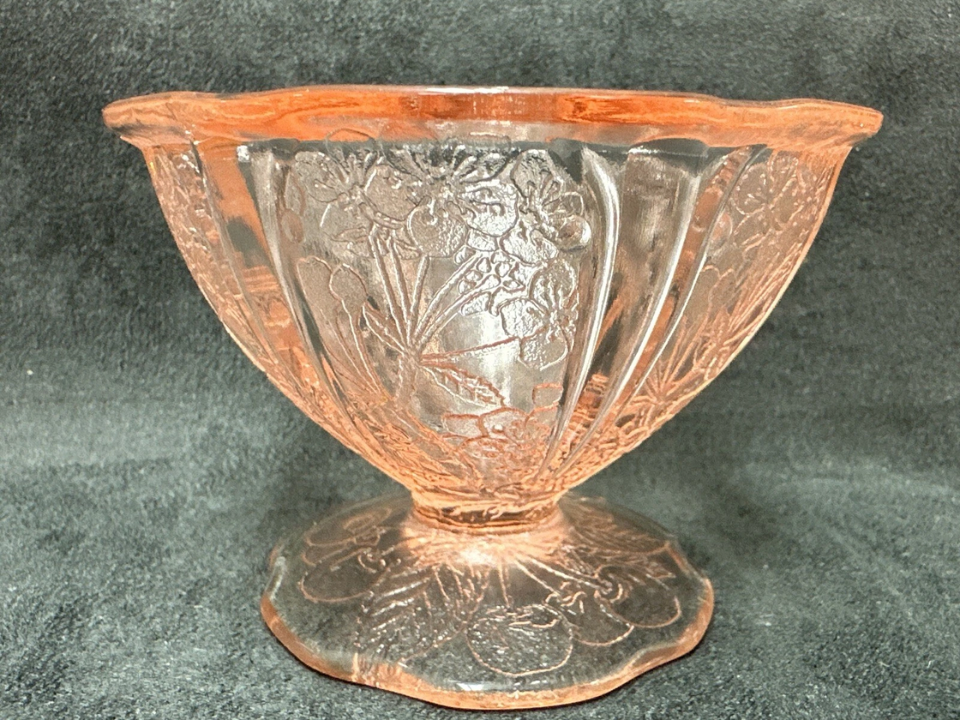
The Cherry Blossom pattern, introduced in 1930, features delicate pink flowers surrounded by soft, flowing lines, creating an elegant, feminine design. Its rarity stems from its limited production, which makes well-preserved pieces highly valuable. Collectors are especially drawn to pieces in excellent condition, which can sell for anywhere from $150 to $500.
Cherry Blossom pieces can be found in a variety of colors, but the pink variety is the most highly prized. The subtle pastel hues make it a standout in any collection. The pattern’s beauty, coupled with its rarity, has contributed to its enduring popularity. These pieces are often featured in antique glassware auctions, where collectors compete for the chance to add them to their collections.
Adam by Jeannette Glass Company
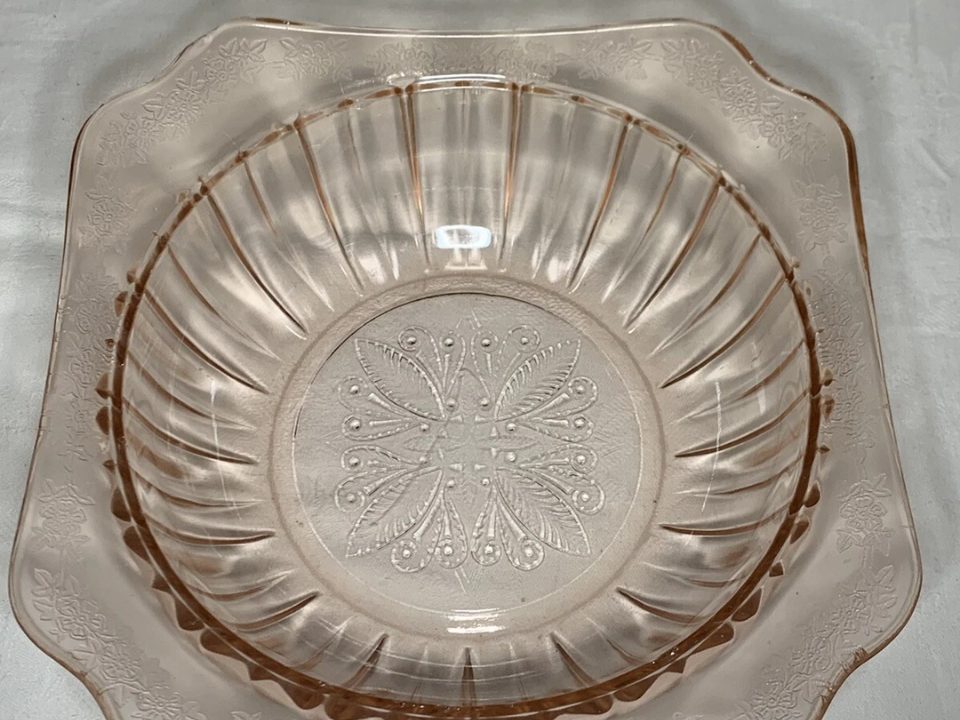
Introduced in 1932, the Adam pattern features a floral design with intricate, raised profiles around the edges of each piece. The delicate detail and elegant design make it one of the more sought-after Depression glass patterns. Adam pieces in excellent condition can range in value from $150 to $400.
The unique design and limited availability have kept this pattern highly coveted by collectors. The subtle, soft pink and clear glass variations are the most common, but finding pieces in excellent condition is often challenging. This rarity and the intricate design contribute to Adam’s high value in the market.
Jubilee by Lancaster Glass Company
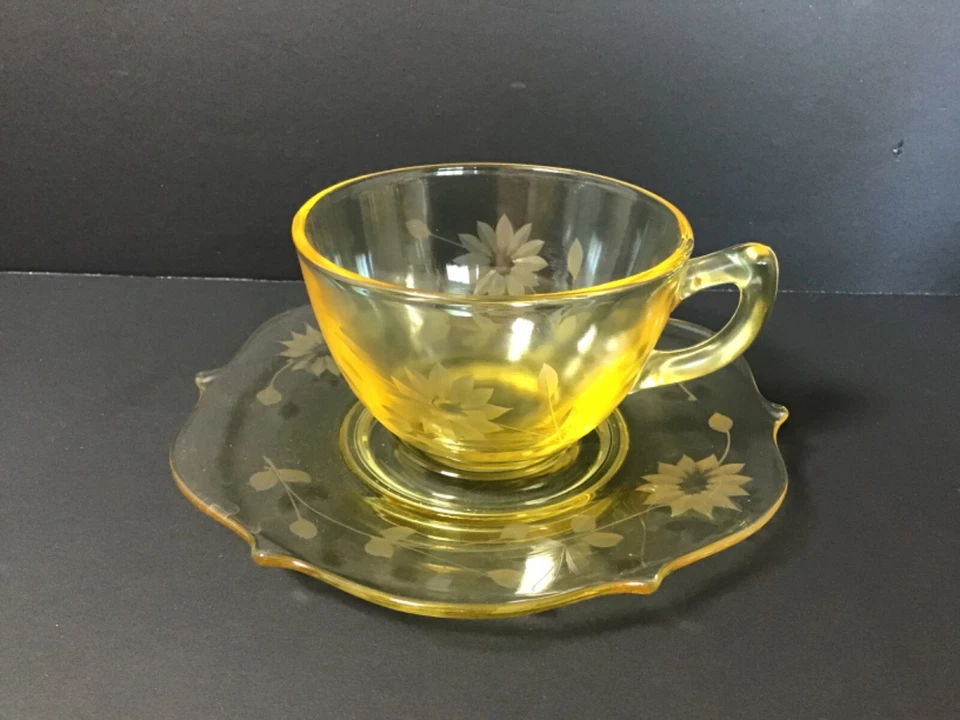
The Jubilee pattern, produced by Lancaster Glass Company, is known for its vibrant colors and intricate design. This pattern was produced during the company’s operation in the 1930s, making it one of the rarer Depression glass pieces. The rich colors and radiant shine of Jubilee make it stand out from other glassware.
Depending on condition and color, pieces from this pattern can range from $150 to $500. Collectors often seek out rare colors like green, amber, and cobalt blue for their collections. The pattern’s unique design and vibrant colors contribute to its desirability among collectors.
Miss America by Hocking Glass Company

Miss America, produced by Hocking Glass Company between 1933 and 1936, is a collector favorite. Pink pieces are the most sought after, but the pattern is also available in green, clear, ruby (red), and blue. Spot Miss America by its sharp hobnails that catch the light similarly to crystal.
Miss America, produced by Hocking Glass Company between 1933 and 1936, is a collector favorite. Pink pieces are the most sought after, but the pattern is also available in green, clear, ruby (red), and blue. Spot Miss America by its sharp hobnails that catch the light similarly to crystal. Miss America pieces can range in value from $200 to $400, depending on condition and color.
Royal Lace by Hazel-Atlas Glass Company

Royal Lace, produced by Hazel-Atlas Glass Company between 1934 and 1941, is easily one of the most valuable glass items to look for at thrift stores and estate sales. The beloved pattern was made in blue, pink, green, amethyst (closer to burgundy in hue), and clear.
Royal Lace, produced by Hazel-Atlas Glass Company between 1934 and 1941, is easily one of the most valuable glass items to look for at thrift stores and estate sales. The beloved pattern was made in blue, pink, green, amethyst (closer to burgundy in hue), and clear. The blue is particularly coveted by collectors today; it was also popular when the dishes were new. Royal Lace pieces can range in value from $50 to $350, depending on condition and color.
Gloria by Cambridge Glass Company
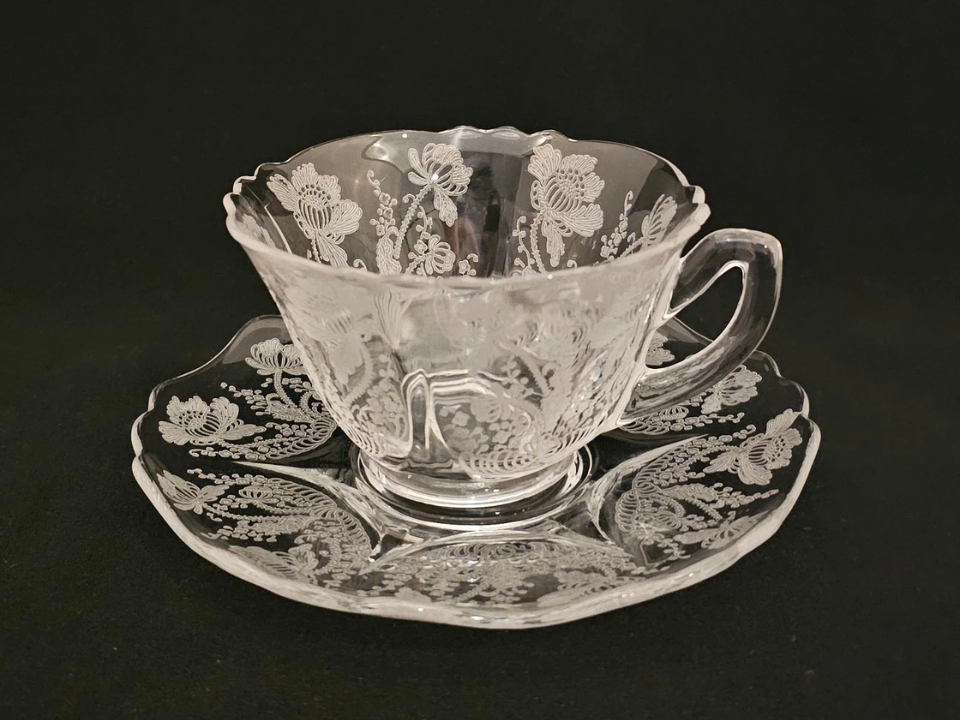
The Gloria pattern by Cambridge Glass Company, released in 1931 and produced for seven more years, features upward-reaching florals etched into scalloped-edged, sometimes gold-rimmed dishware. It was popular in its day, though rare today; the pattern is much sought after by aficionados looking to complete their collections.
The Gloria pattern by Cambridge Glass Company, released in 1931 and produced for seven more years, features upward-reaching florals etched into scalloped-edged, sometimes gold-rimmed dishware. It was popular in its day, though rare today; the pattern is much sought after by aficionados looking to complete their collections. Gloria pieces can range in value from $90 to $400, depending on condition and rarity.
American Sweetheart by Macbeth-Evans Glass Company
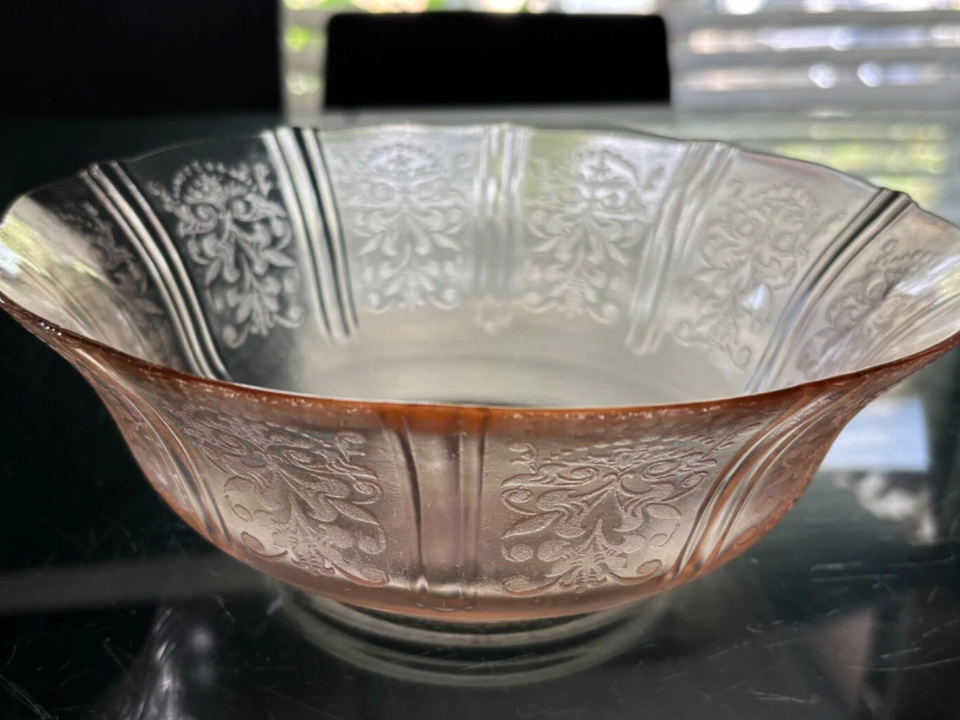
American Sweetheart, produced by Macbeth-Evans Glass Company from 1930 to 1936, is a beloved Depression glass pattern celebrated for its delicate design. The pattern features a center full of paisleys and curlicues with ribbed edges.
American Sweetheart, produced by Macbeth-Evans Glass Company from 1930 to 1936, is a beloved Depression glass pattern celebrated for its delicate design. The pattern features a center full of paisleys and curlicues with ribbed edges. American Sweetheart was made in a soft pink, deep cobalt, red, and a milky white glass called Monax. One way to spot American Sweetheart in Monax is that the edges are translucent with a blue sheen. American Sweetheart pieces can range in value from $180 to $500, depending on condition and color.
Patrician by Federal Glass Company
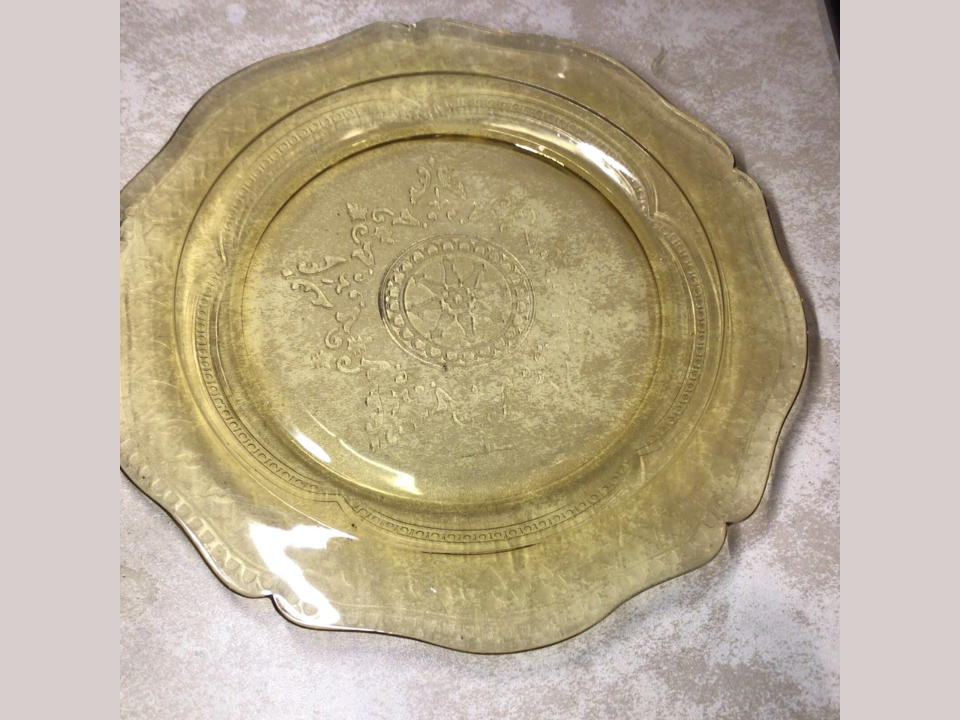
Patrician, produced by Federal Glass Company, is a pattern known for its elegant design and quality craftsmanship. The pattern features a series of concentric circles and scalloped edges, creating a sophisticated look.
Patrician, produced by Federal Glass Company, is a pattern known for its elegant design and quality craftsmanship. The pattern features a series of concentric circles and scalloped edges, creating a sophisticated look. Patrician pieces can range in value from $20 to $100, depending on condition and color
Princess by Hocking Glass Company

Introduced in 1931, the Princess pattern by Hocking Glass Company is recognized for its elegant design featuring scalloped edges and a subtle ribbed texture. Produced in colors like pink, green, and topaz, this pattern became a staple in many households during the 1930s.
Introduced in 1931, the Princess pattern by Hocking Glass Company is recognized for its elegant design featuring scalloped edges and a subtle ribbed texture. Produced in colors like pink, green, and topaz, this pattern became a staple in many households during the 1930s. Today, Princess pieces in excellent condition are highly sought after by collectors. The value of individual pieces ranges from $50 to $200, with complete sets commanding higher prices.
Cameo by Anchor Hocking
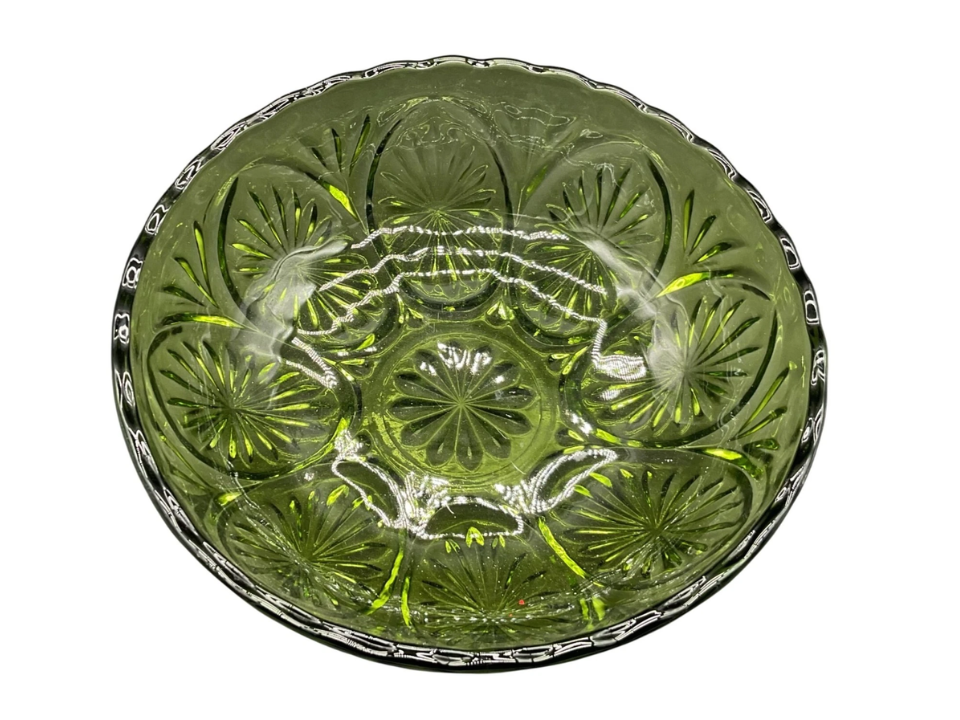
The Cameo pattern, produced by Anchor Hocking from 1930 to 1934, is characterized by its elegant design featuring a raised cameo motif surrounded by a floral border. Made in colors like green, yellow, pink, and crystal, this pattern was a favorite among collectors during the Depression era.
Today, Cameo pieces in pink and yellow are particularly sought after due to their limited production and vibrant hues. Collectors appreciate these pieces for their intricate design and the nostalgia they evoke from the 1930s. The value of these pieces ranges from $100 to $300, depending on condition and rarity
Mayfair by Anchor Hocking

Introduced in 1931, the Mayfair pattern by Anchor Hocking is known for its elegant design featuring a floral motif and scalloped edges. Produced in colors like pink, blue, yellow, and green, this pattern became a popular choice for households during the Depression era.
Produced in colors like pink, blue, yellow, and green, this pattern became a popular choice for households during the Depression era. Among collectors, blue Mayfair pieces are particularly prized due to their rarity and the vibrant color that sets them apart from other Depression glass patterns. The value of these pieces ranges from $50 to $250, with blue items often fetching higher prices.
Iris and Herringbone by Jeannette Glass Company
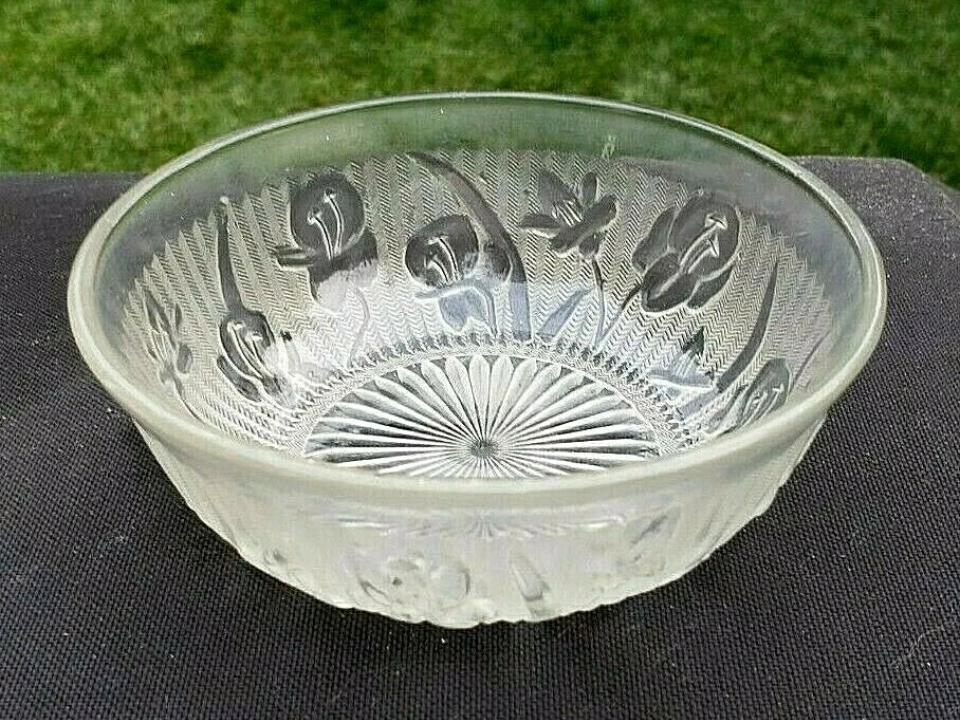
The Iris and Herringbone pattern, produced by Jeannette Glass Company from 1928 to 1932, features a design combining iris flowers and a herringbone pattern. Made in colors like clear, green, and amethyst, this pattern was a popular choice during the Depression era.
Today, Iris and Herringbone pieces are valued for their intricate design and the variety of colors available. The clear version is the most common, but colored pieces, especially amethyst, are rarer and often command higher prices. The value of these pieces ranges from $20 to $100, with amethyst items often fetching higher prices.
Block Optic by Hocking Glass Company
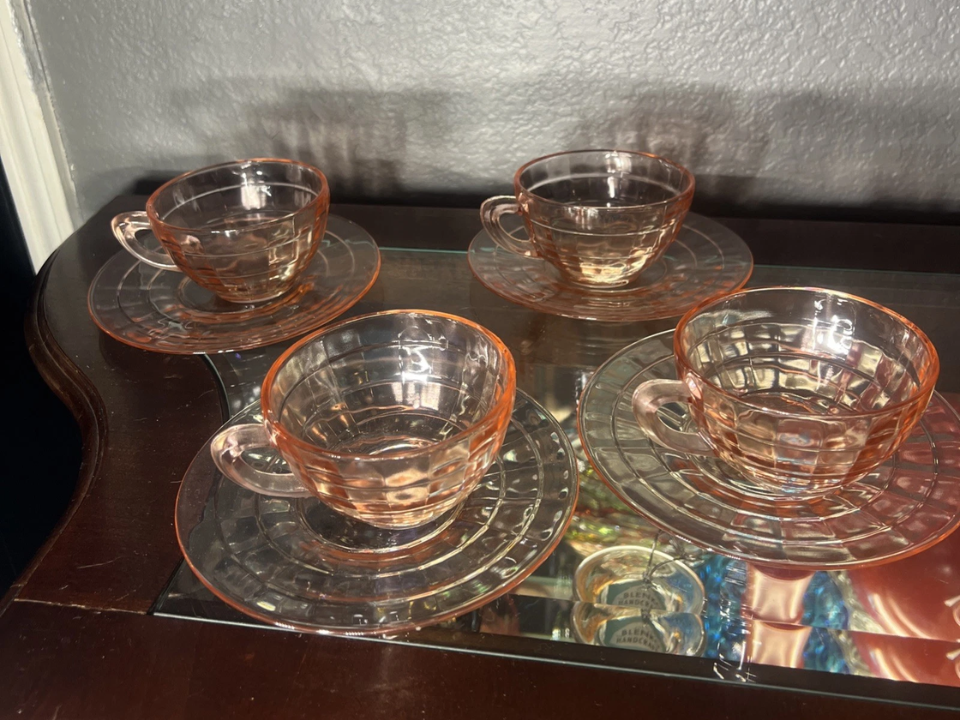
Introduced in 1929, the Block Optic pattern by Hocking Glass Company is characterized by its geometric design featuring raised blocks and panels. Produced in colors like green, topaz, pink, and clear, this pattern was a popular choice during the Depression era.
Collectors appreciate the Block Optic pattern for its unique design and the variety of pieces available, including tumblers, bowls, and serving dishes. The value of these pieces ranges from $15 to $75, with topaz items often fetching higher prices.
Sharon by Federal Glass Company
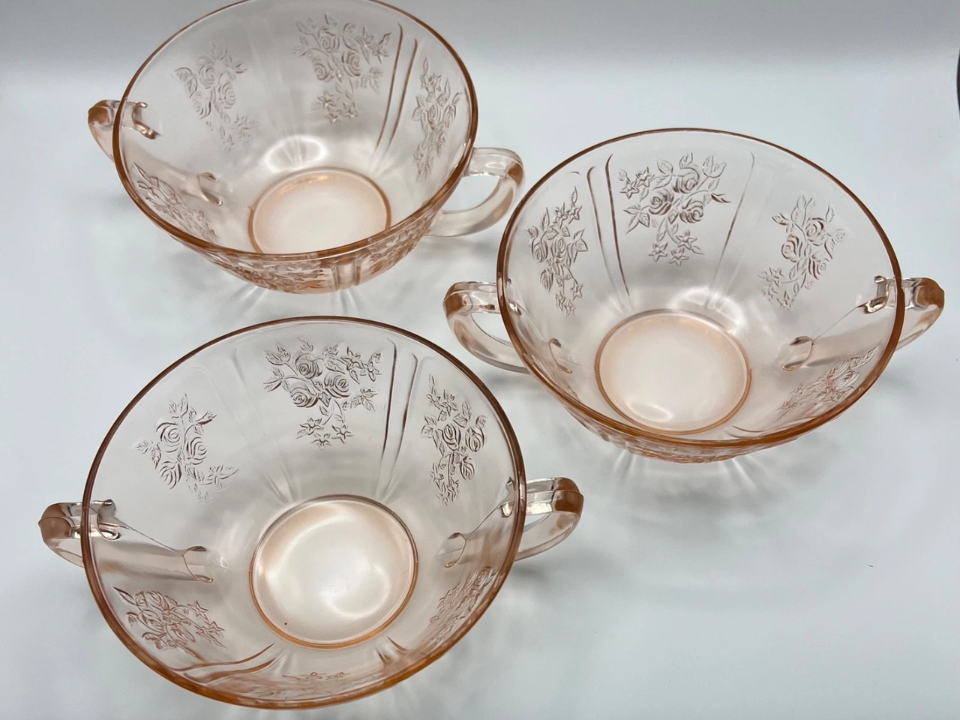
The Sharon pattern, produced by Federal Glass Company from 1935 to 1939, is known for its elegant design featuring a raised floral motif. Made in colors like pink, amber, and green, this pattern became a popular choice during the Depression era. Among collectors, amber Sharon pieces are particularly sought after due to their warm hue and the intricate design that sets them apart from other Depression glass patterns
Collectors appreciate the Sharon pattern for its timeless appeal and the quality craftsmanship of Federal Glass Company. Whether displayed as part of a collection or used for special occasions, Sharon pieces continue to captivate enthusiasts of vintage glassware.The value of these pieces ranges from $20 to $100, with amber items often fetching higher prices.
This article originally appeared on Avocadu.
